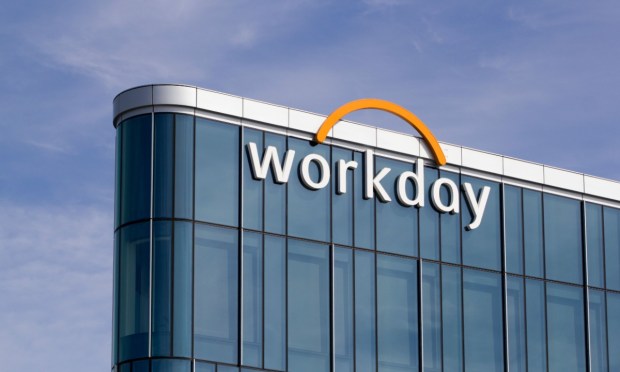Manual AR: ‘Like Running a Marathon With Bricks Tied to Your Feet’
You wouldn’t run a marathon with bricks tied to your feet, would you? Then why are small- to medium-sized businesses (SMBs) still managing accounts receivable (AR) with outdated, manual processes that bleed cash flow dry?
“Maintaining a healthy cash flow is really hard for SMBs,” Murray Sharp, senior vice president of commercial B2B at Nuvei, told PYMNTS. “Delayed payments and inefficient collection processes put a strain on operations and ultimately impact downstream supplier relationships.”
One major obstacle is the ongoing reliance on paper checks. Despite digital payment innovations, paper checks remain prevalent in B2B transactions, contributing to slow and unpredictable cash flow. More than 75% of SMBs are still manually chasing invoices, making collection calls, or dealing with disputes via email, lagging behind competitors that have embraced digital automation and invoice financing solutions.
“The old adage, ‘The check is in the mail,’ is still very much applicable,” Sharp said, underscoring the delays that come with outdated payment methods while highlighting how integrating AR automation with enterprise resource planning (ERP) systems can provide businesses with the financial agility they need to stay competitive.
Still, beyond payments, the B2B financial process involves multiple interactions.
“B2B payments are really a series of interactions,” Sharp said. “A supplier extends credit, receives an order, sends an invoice, deals with potential disputes, processes payments and reconciles transactions across multiple platforms.”
The lack of integrated, automated solutions can leave SMBs struggling with inefficiencies that exacerbate cash flow uncertainty.
Why Manual AR Processes Are the Silent Threat to SMBs
Despite the availability of automation tools, many SMBs still rely on manual data entry, limping along with spreadsheets and overdue payment reminders. It can be a financial disaster waiting to happen.
“Manual data entry is a way of life in B2B,” Sharp said. “Excel is a way of life. But these inefficiencies undermine financial accuracy and create operational burdens.”
A key issue is the misalignment between buyers and suppliers.
“Buyers often have a portal where suppliers must manually enter invoices, while suppliers may have their own portal for payments,” Sharp said. “This standoff results in a mountain of manual work.”
Invoicing errors alone can cause delays.
“A fat-fingered invoice can push payment cycles back even further,” Sharp said. “Then, when payments finally arrive, reconciliation becomes another manual nightmare — matching payments to invoices across multiple systems, banks and email inboxes.”
Disputes add yet another layer of complexity. Sharp said most SMBs still rely on phone calls and emails to resolve invoice discrepancies — a process that prolongs cash recovery cycles and strains relationships.
Automation can streamline dispute resolution, he said.
“Manual dispute resolution creates massive bottlenecks,” Sharp said. “Weaker supplier relationships, prolonged DSO — it all stems from a lack of real-time access to data.”
Nuvei’s approach prioritizes self-service tools that give buyers direct access to historical and real-time invoice data.
“We want our customers to offer a world-class buyer experience,” Sharp said. “By embedding messaging capabilities within AR automation platforms, we provide visibility into dispute resolution progress, reducing friction and accelerating resolutions.”
The Future of B2B Finance
A lack of working capital remains one of the biggest barriers to growth for SMBs. Reducing DSO is critical, as limited liquidity can disrupt supply chains, delay supplier payments and hinder production, Sharp said.
“Not having visibility into your working capital creates a ripple effect across the entire supply chain,” he said. “A delayed supplier payment can lead to stock shortages, production slowdowns and customer dissatisfaction.”
Invoice financing — especially when integrated within ERP systems — offers a viable solution.
“We focus on what I call the working capital stack,” Sharp said. “AP, AR and invoice financing are interconnected. You need visibility into all of it, and it can’t be separate from your system of record.”
By embedding financing solutions within ERP platforms, SMBs can mitigate cash flow imbalances, reduce delays and gain greater predictability over payments.
“Let’s say a supplier lands their biggest order ever but must extend 90-day terms,” he said. “The supplier keys the invoice into the buyer’s procure-to-pay platform, faces a dispute and finally receives payment — likely through a virtual card or ACH push payment. Meanwhile, they need to meet payroll and fund other orders. Suddenly, that 90-day period turns into 120 days. Invoice financing within an ERP allows them to access funds earlier, bridging cash flow gaps and maintaining business continuity.”
Even with clear benefits, many SMBs hesitate to adopt AR automation due to concerns over implementation costs and disruption.
“A lot of these businesses have been around for decades and are resistant to change,” Sharp said. “The seven deadliest words in business? ‘We have always done it this way.’”
However, by integrating AR automation, invoice financing and working capital management into a single, cohesive platform, businesses can take control of their financial future — turning reactive cash flow management into proactive growth strategies.
“The businesses that win over the next decade will be the easiest to work with,” Sharp said. “In consumer payments, companies optimize checkout and offer multiple payment methods to meet customer preferences. B2B is just a decade behind. Those that streamline interactions, digitize payments and provide real-time data access will thrive.”
For all PYMNTS B2B coverage, subscribe to the daily B2B Newsletter.



